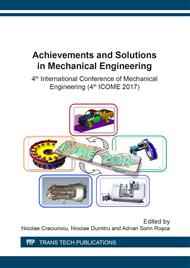p.329
p.335
p.341
p.347
p.353
p.359
p.365
p.371
p.377
Comparison of the Results Obtained in Simulation of SERB Dampers Using Two Different Hysteresis Models
Abstract:
This paper presents the difference between the results obtained with GenEcAm in simulating the seismic behavior of a P + 10E building equipped with SERB dampers modeled with two hysteresis models, namely the classic Bouc-Wen model and a Bouc-Wen modified model Bouc-Wen_Exp, in order to highlight the most appropriate theoretical model for modeling these dampers. The GenEcAm program is created by the author for the dynamic analysis during seism for structures of buildings equipped with different earthquake damping systems, with the possibility to use 9 different theoretical models of hysteresis for simulating the hysterical behavior of seismic energy dissipation devices that fit the antiseismic system of the analysed building.
Info:
Periodical:
Pages:
353-358
Citation:
Online since:
March 2018
Authors:
Keywords:
Price:
Сopyright:
© 2018 Trans Tech Publications Ltd. All Rights Reserved
Share:
Citation:


